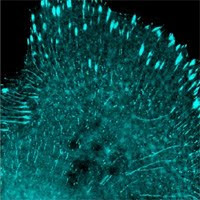From AlleleBlog: http://blog.allelebiotech.com/2012/08/choosing-the-right-fluorescent-protein/
In 1994 the green fluorescent protein cloned from Aequorea victoria
became the first in a long line of genetically encoded labels. Since
that time, the fluorescent protein palette has expanded to cover the
entire visual spectrum. With so many color variations and options, which
fluorescent protein (FP) is best for your research? Three key factors
are among the most important to consider: brightness, photostability,
and aggregation.
Brightness is the most obvious factor that most researchers consider
when choosing an FP. In general, the brighter the FP, the better it
will perform under almost all experimental conditions. When evaluating
an FP’s brightness, make sure to look at the critical optical parameters
— extinction coefficient and quantum yield. The product of these two
values for different FPs can be used to directly compare their
brightness. Brighter FPs will have lower detection limits (i.e. the
concentration at which the FP becomes visible above autofluorescence of
other cell components), and will allow imaging with lower excitation
light intensity, minimizing the possibility of phototoxic effects.
Photostability has increasingly become a consideration when
researchers choose fluorescent proteins. Many FPs, even if they are
initially quite bright, will photobleach under continuous excitation
during imaging. In order to perform long-term imaging experiments or to
do quantitative analysis, an FP with high photostability should be the
first choice. Unfortunately, methods for measuring and reporting
photostability vary widely in the scientific literature, so be sure to
understand how your FP’s photostability was measured before trying to
make comparisons!
Aggregation (or oligomerization) has been one of the major issues
tackled in the development of FPs. Many wild-type FPs form tetramers,
which aggregate badly when expressed as fusion tags in cells. Engineered
monomeric forms of many FPs are now available, and these monomeric FPs
should always be used when making fusion constructs. For simple
expression markers, however, oligomerization is not usually a major
concern, and the brightest possible FP should be used in this case.
As with other research tools, doing your homework and reading the
primary literature is always the best approach to choosing the right FP
for your project!
Subscribe to:
Post Comments (Atom)




No comments:
Post a Comment